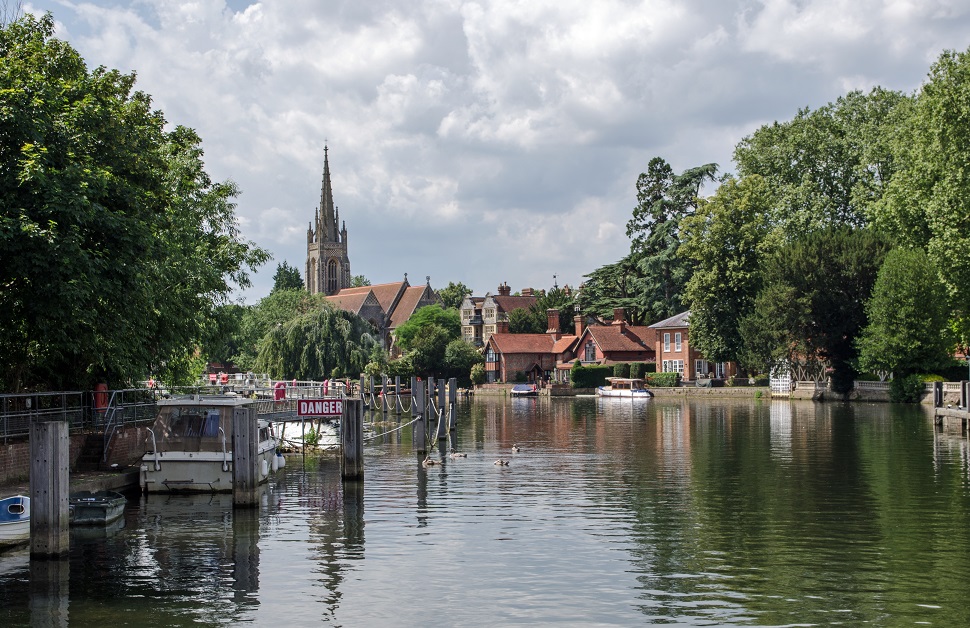Buckinghamshire Trees and Forests
Highly regarded for open countryside and numerous green areas and natural features, Buckinghamshire in South East England is considered predominantly rural. Alongside the Chiltern Hills Area of Outstanding Natural Beauty (AONB) and among other patches of untouched land, built-up areas in the county include High Wycombe, Aylesbury, Stubbington, Chesham and Gerrards Cross.
National Forest Inventory statistics claim that – even in a county as rural as Buckinghamshire – only 13% of the 156,495 hectares of land is covered by woodland. Even though 24.7 hectares of natural forest was lost between 2010 and 2020, efforts to counteract losses led to 2,300 hectares of new trees being planted in Buckinghamshire across the same period, equating to an increase of 6.5% in tree canopy cover.
An integral component in the retention of individual trees and wooded areas across the county has been schemes for planting new trees in Buckinghamshire. Both local communities and Buckinghamshire County Council worked to increase the number of trees in the county. For instance, the Bucks Tree Mission committed to planting more than 500,000 new trees over a ten-year period.
For several reasons – including their ability to absorb carbon dioxide and express oxygen – trees are valued as important in the eyes of local councils. As such, certain trees are strictly safeguarded, and if any protected trees are on a development site, the developer will need a tree survey before moving forwards with any works from the development process that could cause disruption or damage to them.

Conservation, Preservation and Protection for Trees
Across Buckinghamshire and the corresponding areas of Aylesbury Vale, Chiltern and Wycombe, trees are protected using the two primary systems of conservation areas and Tree Preservation Orders (TPOs). If any tree is located within a conservation area or currently under an existing Tree Preservation Order (TPO), the developer will need written consent from the local council before undertaking any works that could interfere with them.
Conservation areas restrict any actions that could affect all trees within a chosen zone, while Tree Preservation Orders (TPOs) restrict any actions that could affect single trees. Any trees within a conservation area or under a TPO will be protected by the local council, and as a result, it is crucial that developers look into potential protections surrounding trees on their site before allowing any works to go ahead, particularly as it could affect planning applications.
Local Authorities and Councils
- Buckinghamshire Council (formed from Aylesbury Vale District Council, Chiltern District Council, South Bucks District Council, and Wycombe District Council)
Reporting on Trees
Individual trees on a development site can be accordingly inspected by an arboriculturist through a BS5837 tree survey. On a chosen date, they will attend the site and look over all trees present, and using their insight and expertise, all trees will be given a grading based on the primary properties of condition and value. For suitable conclusions for each tree to be made, a mitigation hierarchy will be used, with retention of trees ranking as the desirable outcome in all tree surveys.
All trees that are in good condition, valuable or unaffected by the development will be retained. The arboricultural consultant will then need to decide the fate of other trees on the site, with any trees inside of the development site that cannot be catered for either relocated or destroyed and compensated for with the planting of new trees. As for trees that are in poor condition or likely to pose concerns to health and safety, the only outcome from the tree survey will be to destroy them.
Within a few short days of the tree surveyor carrying out the necessary tree surveys, a tree report will be created to advise both the developer and the local planning authority. It will include details of the tree survey process, observations of the site, and mitigation measures for each tree, and once the tree report has been passed on to the planning department of the local authorities, it will address all concerns in relation to trees, influencing the planning officer’s conclusions when it comes to making decisions regarding planning applications.
Contact Our Team for a Quote
Whenever individual trees are identified on a development site, a tree survey would be needed to ensure that they aren’t protected, and if they are, that they are dealt with accordingly in relation to your planning proposal and laws protecting them. By planning ahead, you can avoid any issues that may occur later into the development process, and it will also allow you to book in a tree survey with a tree surveyor at a time and date that suits your planning schedule.
Call our team over the phone or fill out a quick quote form, and through speaking to our team, we can determine your tree care needs and send across a free quote based on your site and project. We can then choose a date for the required tree surveys and organise it to go ahead as planned. Afterwards, you will receive a completed tree report, and you can then pass it on to your local planning authority as part of the application for planning permission.